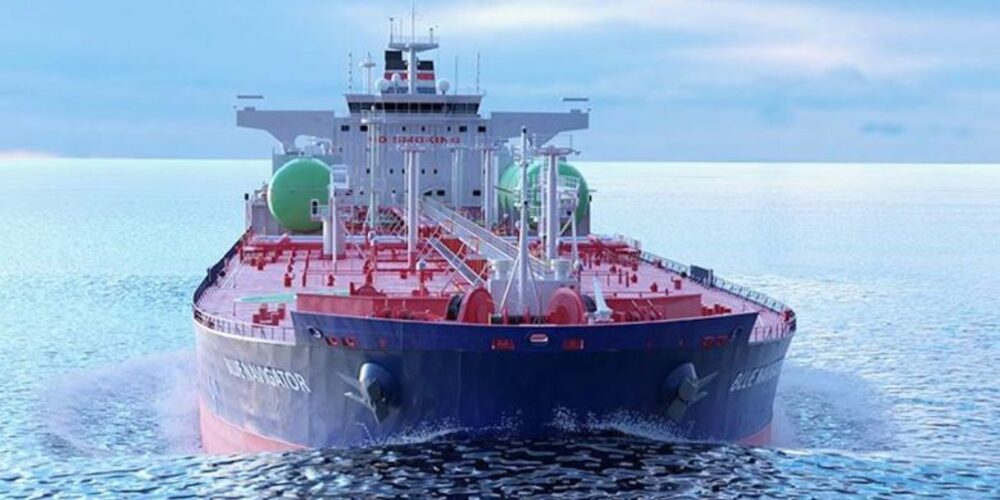While the challenges are considerable, decarbonisation might lay the groundwork for future competitive advantage argues Georgios Plevrakis, vice president, global sustainability at ABS.
At first sight, shipping and carbon emissions make poor partners. Shipping is a heavy carbon emitter, despite being the most efficient form of freight transport. Progress on reducing emissions has been slow and difficult, with regulation lagging the court of public (and industry) opinion.
This is going to change once the EU’s Emissions Trading Scheme (ETS) begins to price shipping’s carbon contribution. The cost of doing business is sure to rise but for owners who plan to stay in the industry, the question is whether to see carbon purely as a cost or an opportunity to be traded for competitive advantage.
Shipping’s decarbonisation challenge is so great that it is sometimes hard to see only the threat rather than the opportunity. While the changes required by asset owners and other stakeholders are considerable, it is possible to use decarbonisation to lay the groundwork for future competitive advantage.
The opportunity is to look ahead and quantify a bottom line for carbon as well as a top line
The required mindset shift could be the hardest part of the change, but shipowners by their nature are adaptable, creative and used to seeking fresh market opportunities. Carbon could prove to be a nascent market that puts owners in pole position for the transition.
To do this, owners will need to think in terms of building assets that can generate different kinds of revenue, not just by delivering transport work but also through increased efficiency that could generate carbon credits, or enable emission abatement across the supply chain.
This requires seeing a decarbonisation strategy in layers. Beyond the initial ‘compliance shock’, owners need to decide what steps they must take to remain relevant and active in the market.
It also calls for a shift in focus, from fear of the ETS, EEXI and CII towards their potential value as differentiators and even for revenue generation. The challenge is real, but the shipping industry thrives on its ability to adapt and find a way turn adversity into opportunity. Why should carbon be different?
Understanding how to achieve EEXI compliance and what the impact of CII ratings will be requires investment of time and energy – and making assumptions about regulations that are still developing, especially around the upcoming market based measures. Carbon economics will require dynamic, highly efficient vessel operations with a link to emissions accounting that can create value, offsetting wider fleet emissions.
The opportunity is to look ahead and quantify a bottom line for carbon as well as a top line, capturing gains from vessel operations under the EU ETS, with fresh revenue generated by carbon trading.
The first three to four years of the EU ETS will see owners make flat payments rather than trading, but after this, inclusion in the carbon market might provide an opportunity for highly efficient assets that operate below the carbon cap to generate income beyond their primary purpose.
Shipowners have not previously been engaged in these types of discussions but are becoming more and more interested in layering carbon credits and offset trading into their decarbonisation strategies.
This potential is creating significant interest around understanding whether shipping can actually benefit from market regulations rather than simply shoulder them. Decarbonisation will cut across all aspects of shipping company operations: the requirement must be to have a business plan that ensures the sustainability of the company.
That business plan must put an Environmental, Social and Governance (ESG) strategy at its centre; this will be critical to supporting the process of reducing and ultimately removing carbon emissions.
Good ESG begins with benchmarking – identifying where investment is needed and how to handle the resulting data points. This will identify if there is enough diversity of knowledge and skills in the employee base to address the carbon challenge at a lifecycle level and generate solutions.
Improving Environmental performance is possible once the business has understood the changes required to consistently reduce emissions and move towards sustainable operations. ESG strategy can help identify ways to generate value through new and existing processes, including carbon trading.
This goes far beyond the criticism that ESG is in some ways a box-ticking exercise. Instead, it can help businesses understand their long term relationship to sustainability. This type of rethinking also means no longer viewing regulations as just about cost – but also as an opportunity to create a business that can thrive in the new carbon economy.
Source: splash247.com

